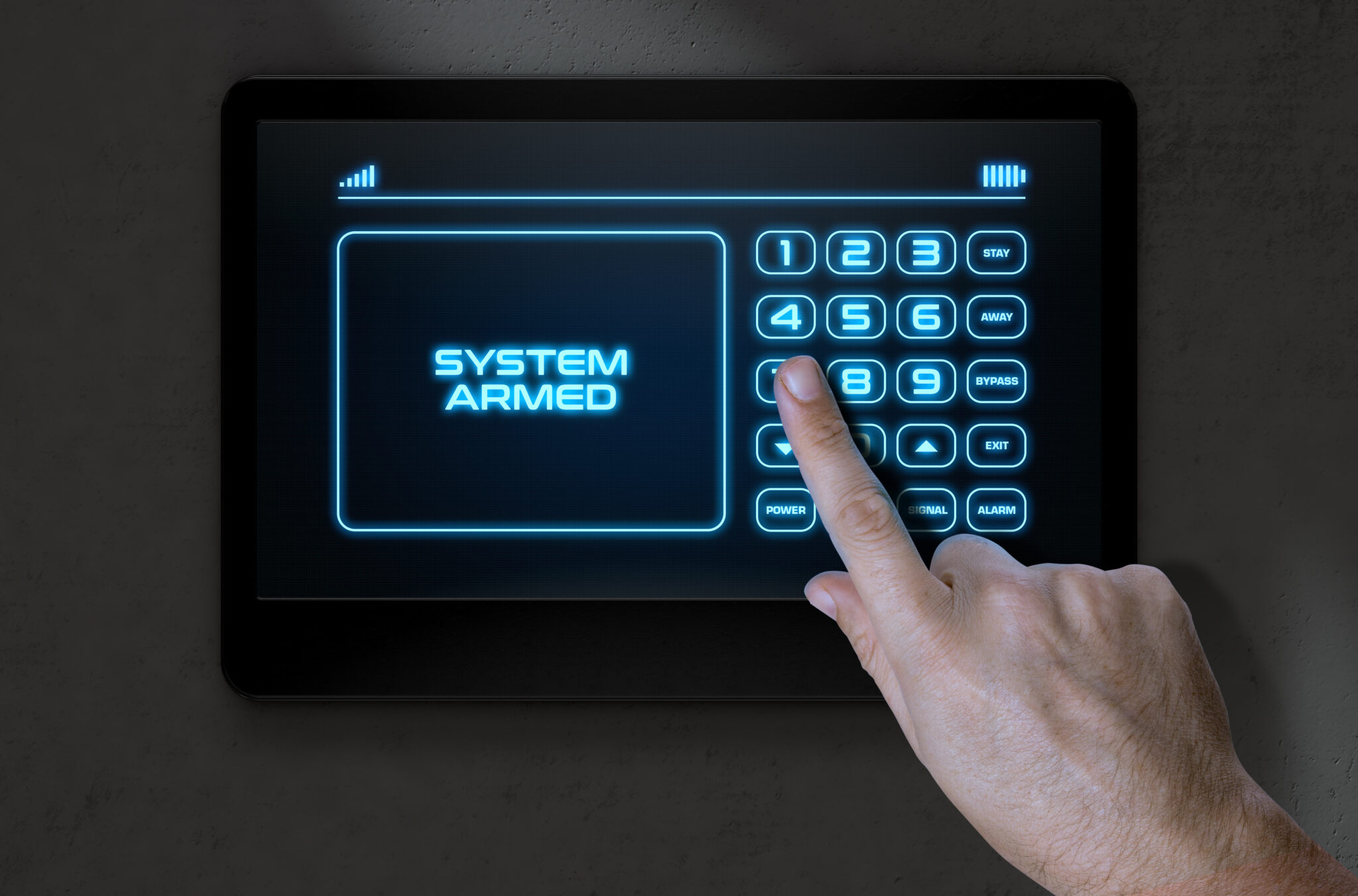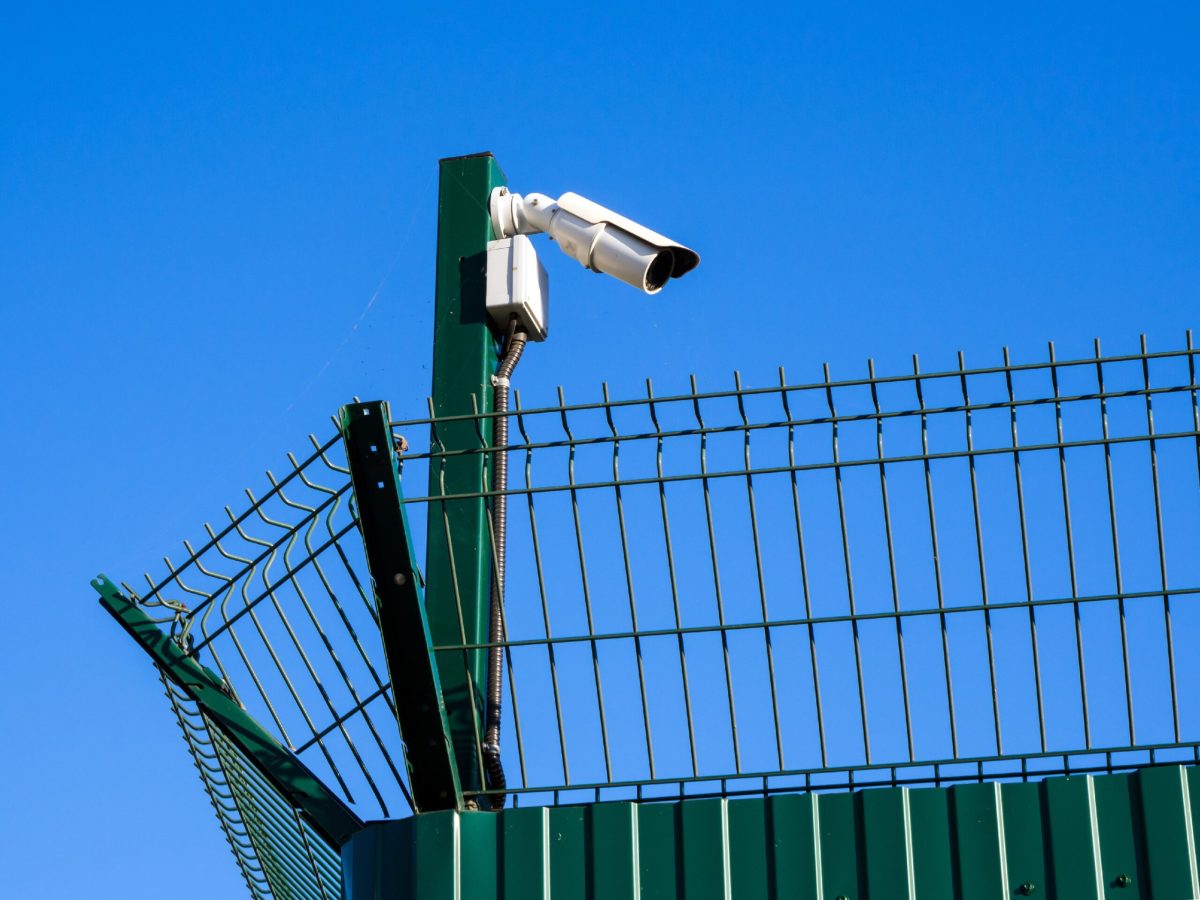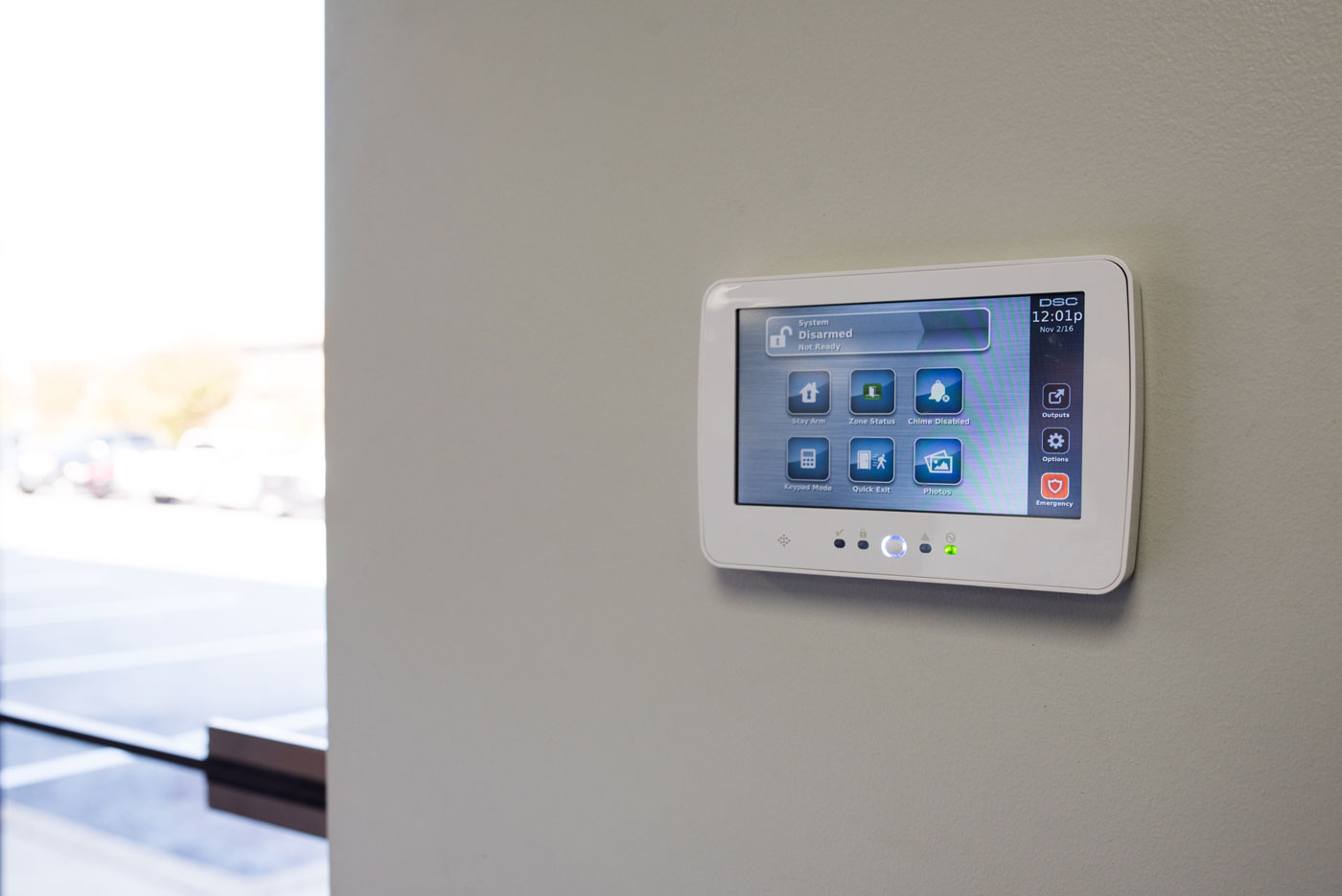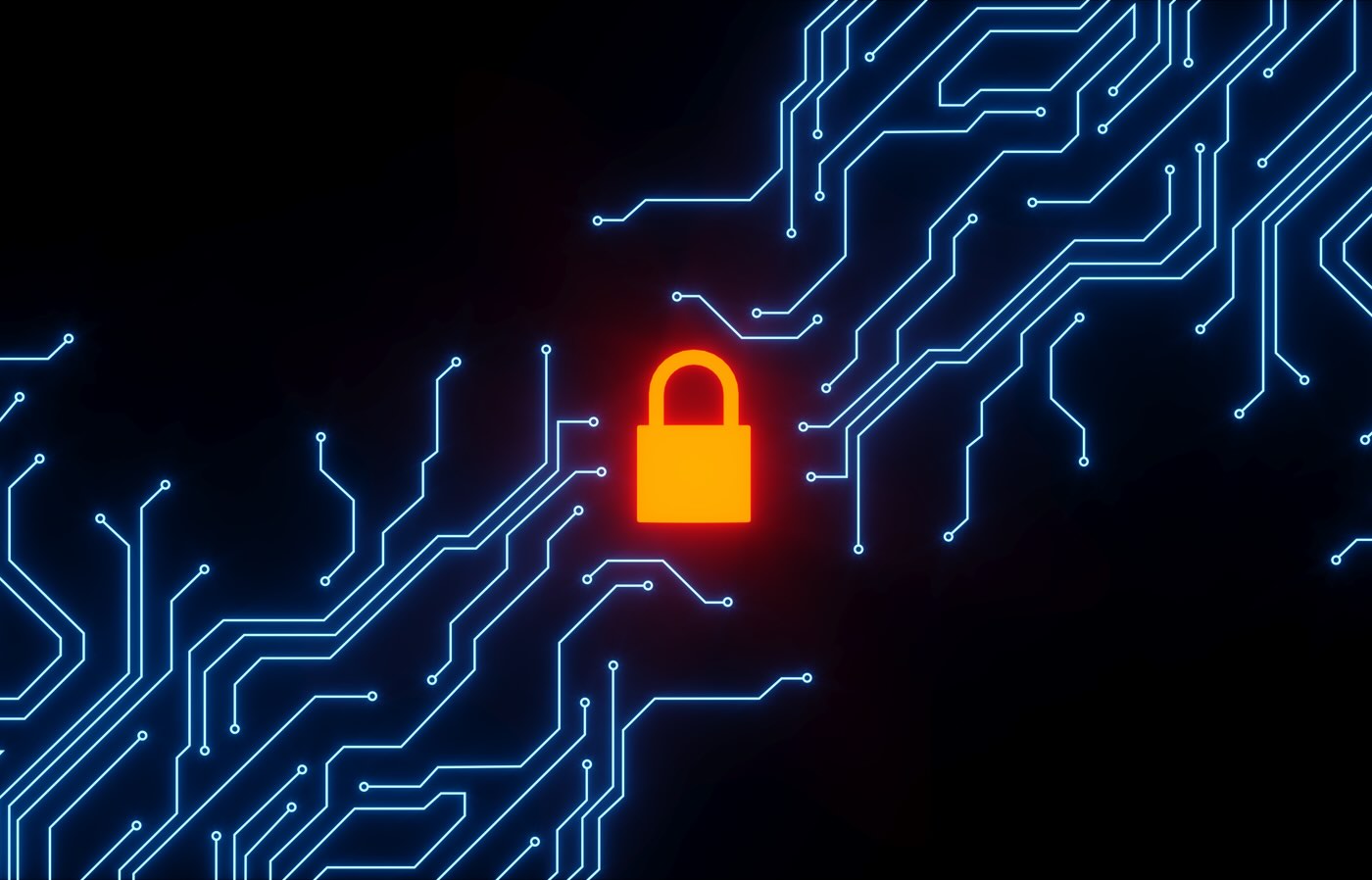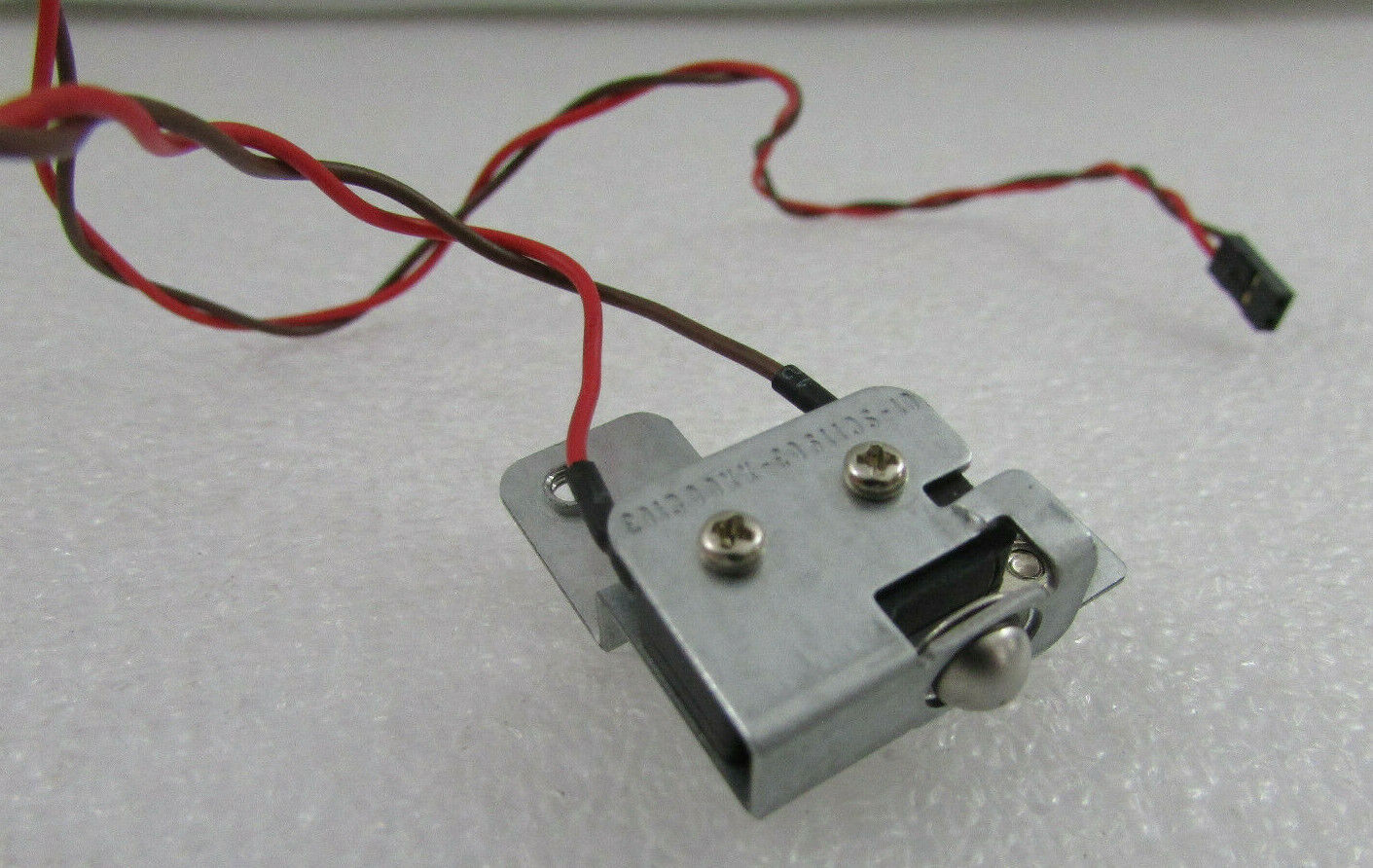Home>Home Security and Surveillance>How Do Security Controls Deal With Host Intrusion Detection Systems (HIDS)
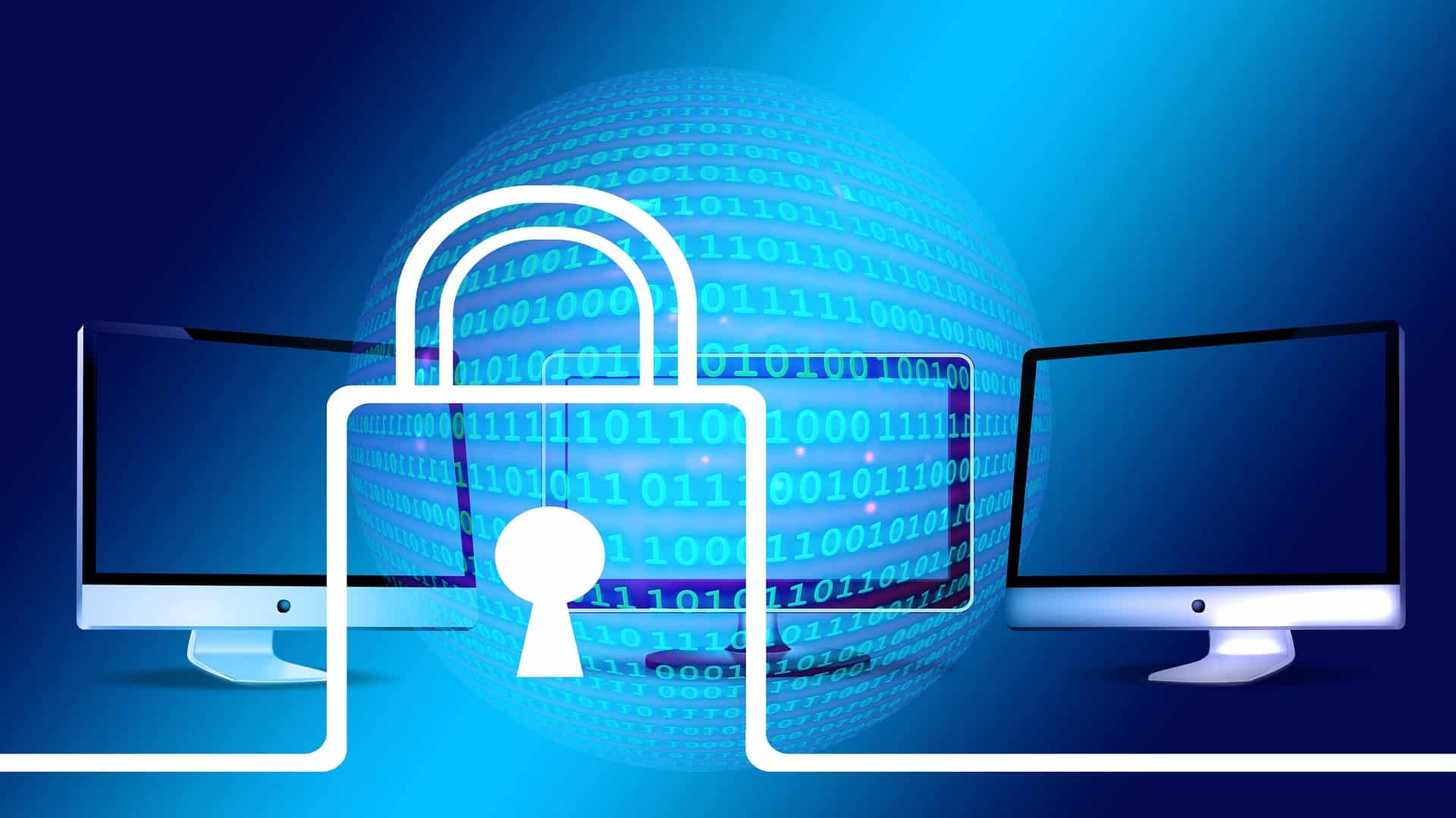

Home Security and Surveillance
How Do Security Controls Deal With Host Intrusion Detection Systems (HIDS)
Modified: March 21, 2024
Learn how security controls handle host intrusion detection systems (HIDS) in home security and surveillance. Enhance your protection with effective defense mechanisms.
(Many of the links in this article redirect to a specific reviewed product. Your purchase of these products through affiliate links helps to generate commission for Storables.com, at no extra cost. Learn more)
Introduction
Welcome to the world of home security and surveillance. In today’s fast-paced and digitally connected world, ensuring the safety and security of our homes has become increasingly important. With the advancements in technology, there are now numerous options available for home security systems, with one of the most critical components being host intrusion detection systems (HIDS).
HIDS plays a vital role in monitoring and protecting our homes from potential threats and unauthorized access. These systems are designed to detect and respond to suspicious activities or intrusions that may compromise the security and privacy of our homes. However, just having a HIDS in place is not enough; it is crucial to implement effective security controls to enhance the overall efficiency and effectiveness of these systems.
In this article, we will delve into the world of security controls for HIDS and explore the various measures that can be implemented to ensure maximum security for your home. We will discuss the purpose and importance of security controls, the different types of controls available, and the challenges and considerations associated with their implementation.
By the end of this article, you will have a clear understanding of how security controls can enhance the performance and reliability of your HIDS, and how to choose the right controls to suit your specific needs.
So, let’s dive in and explore the fascinating realm of security controls for HIDS!
Key Takeaways:
- Implementing security controls, such as firewalls, antivirus software, and user account controls, alongside Host Intrusion Detection Systems (HIDS) is crucial to protect your home network from potential threats and unauthorized access.
- Challenges in implementing security controls for HIDS, such as complexity, resource limitations, and user acceptance, require careful consideration and proactive measures to ensure the ongoing security and protection of your home network.
Overview of Host Intrusion Detection Systems (HIDS)
Host Intrusion Detection Systems (HIDS) are a crucial component of a comprehensive home security setup. These systems work by monitoring and analyzing the activities and behaviors of a host or device within a network to identify any signs of unauthorized access or suspicious behavior.
HIDS operate at the individual host level, such as a computer, smartphone, or other smart devices connected to your home network. They utilize various techniques, such as log analysis, file integrity monitoring, and real-time monitoring of network traffic, to detect any malicious activities.
One of the key advantages of HIDS is their ability to provide granular visibility and control over the security of each host device on your home network. They can detect intrusions or anomalies that traditional network security measures, such as firewalls or intrusion detection systems (IDS), may overlook.
HIDS can identify a wide range of potential security threats, including malware infections, unauthorized access attempts, unusual network traffic patterns, and suspicious changes to system files. By actively monitoring and analyzing these activities, HIDS can trigger alerts or take automated actions to mitigate the potential risks.
Overall, HIDS play a critical role in fortifying the security of your home network and devices by providing real-time threat detection and response capabilities. However, in order to maximize the effectiveness of HIDS, it is important to implement appropriate security controls that complement and strengthen the overall security posture.
Now that we have a basic understanding of HIDS, let’s explore the purpose and importance of security controls in further detail.
Purpose and Importance of Security Controls in HIDS
Security controls are essential components of any HIDS implementation. They serve the purpose of enhancing the overall security posture of your home network and devices by proactively detecting and preventing potential threats. These controls are designed to work in conjunction with HIDS to provide a layered defense approach, making it difficult for attackers to exploit vulnerabilities and gain unauthorized access.
The importance of security controls in HIDS cannot be overstated. They provide several key benefits, including:
- Threat Prevention: Security controls, such as firewalls and intrusion prevention systems (IPS), can identify and block potentially harmful network traffic before it reaches the host devices. By filtering out malicious packets or known attack signatures, these controls act as a first line of defense, minimizing the risk of successful intrusions.
- Real-time Detection and Response: Security controls enable the HIDS to actively monitor and analyze network traffic, system logs, and file activities in real-time. They can detect unusual or suspicious behaviors, such as unauthorized access attempts or malware infections, and trigger alerts or automated responses to mitigate the threats promptly.
- User Account Controls: Proper user account controls, including strong password policies, multi-factor authentication, and access privileges management, help prevent unauthorized access to the host devices. By implementing strict user account controls, you ensure that only authorized individuals can access and interact with your home network.
- Patch Management: Keeping the operating systems and software applications on your host devices up-to-date is crucial for security. Patch management controls automate the process of identifying and applying security patches, reducing the risk of exploitation of known vulnerabilities in your devices.
- Log Monitoring and Analysis: Security controls that focus on log monitoring and analysis can provide valuable insights into the activities happening on your host devices. By analyzing system and network logs, you can identify potential security incidents, track user behavior, and detect any unauthorized access attempts.
- File Integrity Monitoring: File integrity monitoring (FIM) controls help ensure the integrity and security of critical files and system configurations. By monitoring and alerting on any unauthorized changes to these files, FIM controls can help detect and prevent malicious tampering or unauthorized modifications.
- Network Segmentation: Security controls that implement network segmentation techniques can isolate different parts of your home network, preventing lateral movement by attackers. This means that even if one device is compromised, the attacker is limited in their ability to access other devices or sensitive data within your network.
By implementing these security controls in conjunction with HIDS, you significantly enhance the security of your home network and devices. They provide multiple layers of defense against potential threats and ensure that any identified vulnerabilities are promptly addressed.
Now that we have explored the purpose and importance of security controls in HIDS, let’s delve deeper into the various types of security controls that can be implemented.
Types of Security Controls for HIDS
When it comes to protecting your home network and devices with a Host Intrusion Detection System (HIDS), there are several types of security controls that you can implement. These controls work together to create a layered defense, ensuring the maximum level of protection against potential threats. Let’s explore some of the most common types of security controls for HIDS:
- Firewalls: Firewalls act as a barrier between your home network and the internet, filtering incoming and outgoing network traffic. By setting up appropriate firewall rules, you can control which connections are allowed and block unauthorized access attempts. Firewalls can be implemented at the network level or on individual host devices.
- Antivirus Software: Antivirus software is essential for detecting and removing malware from your host devices. It scans files and applications for known patterns or signatures of malicious code, preventing infections and protecting your system from various types of threats, including viruses, worms, and trojans.
- Intrusion Prevention Systems (IPS): IPS is designed to monitor network traffic and detect and prevent intrusions in real-time. It can block or flag suspicious activities, such as unauthorized access attempts or abnormal data transfers. IPS works alongside HIDS to provide an additional layer of protection against network-based attacks.
- Log Monitoring and Analysis: Monitoring and analyzing system and network logs can provide valuable insights into potential security incidents. By implementing log monitoring and analysis tools, you can identify any unusual or suspicious activities, such as failed login attempts or unauthorized access to sensitive files.
- User Account Controls: User account controls play a crucial role in preventing unauthorized access to your host devices. By implementing strong password policies, enabling multi-factor authentication, and regularly reviewing and managing user privileges, you can significantly reduce the risk of attackers gaining unauthorized access to your network.
- Patch Management: Regularly updating your host devices with the latest security patches is essential for protecting against known vulnerabilities. Patch management controls automate the process of identifying and applying security patches, ensuring that your systems are up to date and guarded against known exploits.
- File Integrity Monitoring (FIM): FIM controls monitor critical files and system configurations for any unauthorized changes. By comparing the current state of files with a known baseline, FIM can detect and alert on any modifications, ensuring the integrity and security of your system and preventing unauthorized tampering.
- Network Segmentation: Network segmentation involves dividing your home network into separate subnets or VLANs, effectively isolating different parts of your network. By segmenting your network, you can limit the potential impact of a security breach. If one device or subnet is compromised, the attacker is restricted in their ability to move laterally within the network.
These are just some of the many security controls available for HIDS. The combination and implementation of these controls will depend on your specific security requirements and the devices on your home network. Implementing a multi-layered approach will provide comprehensive protection and ensure a secure environment for your home.
Now that we have explored the types of security controls available, let’s discuss the challenges and considerations that come with implementing these controls for HIDS.
Firewalls
Firewalls are one of the foundational security controls for protecting your home network and devices. They act as a barrier between your internal network and the external internet, monitoring and controlling incoming and outgoing network traffic. By setting up appropriate firewall rules, you can determine which connections are allowed and block unauthorized access attempts.
There are two main types of firewalls: hardware firewalls and software firewalls. Hardware firewalls are standalone devices that sit between your modem and router, providing an added layer of protection for all devices on your network. Software firewalls, on the other hand, are installed directly on individual host devices and provide protection at the device level.
Firewalls work by examining packets of data as they pass through. They compare the data against predefined rules and policies to determine whether to allow or block the traffic. These rules can specify specific IP addresses, ports, protocols, or application-level parameters to control access.
One of the primary benefits of firewalls is their ability to prevent unauthorized access from reaching your network. They act as a first line of defense, blocking malicious traffic and potential external threats before they can reach your devices. Firewalls can also help mitigate the risk of internal threats by controlling outgoing traffic and preventing unauthorized data exfiltration.
Another important aspect of firewalls is their ability to perform Network Address Translation (NAT). NAT allows multiple devices on your network to share a single public IP address, providing an added layer of privacy and making it more difficult for attackers to target individual devices.
In addition to traditional packet filtering, modern firewalls often come with advanced features such as stateful packet inspection, intrusion detection and prevention systems, and virtual private network (VPN) capabilities. These additional functionalities further enhance the security of your home network and provide more robust protection against evolving threats.
When implementing a firewall for your HIDS, it is essential to consider the following factors:
- Configuration: Ensure that your firewall is properly configured to reflect your network’s security requirements. This includes setting up appropriate rules and policies and regularly reviewing and updating them as needed.
- Monitoring: Regularly monitor your firewall logs to identify any unusual or suspicious activity. This will help you detect and respond to potential security incidents promptly.
- Updates: Keep your firewall firmware or software up to date to ensure that you have the latest security patches and features.
- Testing: Periodically test your firewall’s effectiveness by performing vulnerability assessments and penetration testing to identify any potential weaknesses.
By implementing a firewall as part of your HIDS security controls, you significantly enhance the protection of your home network and devices. It acts as a critical barrier, preventing unauthorized access and minimizing the risk of security breaches.
Now that we have explored firewalls as a security control, let’s move on to discussing the next control: antivirus software.
Antivirus Software
Antivirus software is a vital security control for protecting your home network and devices against various types of malware, including viruses, worms, trojans, ransomware, and spyware. By scanning files and applications for known patterns or signatures of malicious code, antivirus software can detect and remove malware, ensuring the integrity and security of your system.
Antivirus software works by comparing files on your device against a database of known malware signatures. If a file matches a known signature, the antivirus software will either quarantine, delete, or attempt to repair the infected file. Additionally, antivirus software also utilizes heuristic analysis to identify suspicious behaviors that may indicate the presence of previously unknown malware.
One of the key benefits of antivirus software is its ability to provide real-time protection. It constantly monitors your system for any malicious activity, preventing the execution of known malware and detecting new threats as they emerge. It also scans incoming files and email attachments, ensuring that any potentially infected files are blocked before they can compromise your system.
As the threat landscape is constantly evolving, it is crucial to keep your antivirus software up to date. This includes regularly updating the virus definitions and the software itself. New malware variants are continuously being created, and updated definitions ensure that your antivirus software can recognize and combat the latest threats.
When selecting antivirus software for your HIDS, consider the following factors:
- Effectiveness: Look for antivirus software that consistently ranks high in independent tests for malware detection rates and overall performance.
- Features: Evaluate the features offered by the antivirus software, such as real-time scanning, automatic updates, email protection, and browser extensions.
- User-friendliness: Consider the interface and ease of use of the software. A clear and intuitive interface will make it easier for you to manage and monitor the antivirus software effectively.
- System impact: Take into account the system resources required by the antivirus software. It should not significantly slow down your devices during scans or regular operation.
- Customer support: Check the availability and quality of customer support, including the ability to contact the antivirus software provider for assistance.
In addition to installing antivirus software, it is important to follow best practices for safe computing. This includes avoiding suspicious websites, practicing safe email and internet browsing habits, regularly updating your operating system and software applications, and being cautious when downloading and installing new software.
By implementing antivirus software as a security control for your HIDS, you add an important layer of protection against malware threats. It helps safeguard the integrity and security of your home network and devices, giving you peace of mind that you are proactively defending against potential infections.
Now that we have explored antivirus software, let’s move on to discussing the next security control: Intrusion Prevention Systems (IPS).
Intrusion Prevention Systems (IPS)
Intrusion Prevention Systems (IPS) are an essential security control that enhances the protection of your home network and devices by actively monitoring and preventing intrusions in real-time. IPS works alongside Host Intrusion Detection Systems (HIDS) to provide an additional layer of defense against network-based attacks.
IPS operates by examining network traffic, analyzing data packets, and comparing them against a set of predefined rules or signatures. It looks for patterns or behaviors that indicate potential intrusions or malicious activity. When suspicious activity is detected, IPS can take immediate action to block or flag the traffic, preventing attackers from exploiting vulnerabilities on your network.
There are two main types of IPS: network-based IPS (NIPS) and host-based IPS (HIPS). NIPS is deployed at a network level and monitors all incoming and outgoing traffic passing through a network device. It provides centralized protection for the entire network. On the other hand, HIPS is installed directly on individual host devices and monitors the network traffic specific to that device.
One of the primary advantages of IPS is its ability to detect and prevent threats in real-time. Unlike HIDS, which primarily focuses on analyzing logs and behaviors after an event has occurred, IPS actively monitors network traffic and can take immediate action to block potential attacks. This proactive approach helps to minimize the impact of intrusions and prevent potential damage to your network and devices.
IPS can detect a wide range of network-based attacks, including port scanning, denial-of-service (DoS) attacks, buffer overflows, and man-in-the-middle attacks. It can also provide protection against known vulnerabilities in network protocols or applications by blocking exploit attempts.
When implementing an IPS as a security control for your HIDS, consider the following factors:
- Placement: Decide whether you want to deploy NIPS to protect the entire network or HIPS on individual host devices. Consider the network topology, security requirements, and the level of control and visibility needed.
- Signature Updates: Regularly update the IPS with the latest signatures and rules to ensure it can detect and block new threats effectively.
- Performance: Evaluate the performance impact of the IPS on your network. Ensure that it can handle the traffic volume without causing significant latency or network disruptions.
- Tuning: Configure the IPS to suit your specific network environment and security requirements. This includes fine-tuning the rules, thresholds, and response actions.
- Log Monitoring: Monitor and review the IPS logs to identify any potential false positives, fine-tune the rules, and gain insights into network activity.
By implementing an IPS as part of your HIDS security controls, you fortify your network’s defenses and protect against a wide range of network-based attacks. It adds an additional layer of security, complementing the capabilities of HIDS and providing real-time threat prevention.
Now that we have explored IPS, let’s move on to discussing another important security control for HIDS: log monitoring and analysis.
Regularly update and patch your HIDS to ensure it can detect and respond to the latest security threats.
Log Monitoring and Analysis
Log monitoring and analysis is a crucial security control for Host Intrusion Detection Systems (HIDS) as it provides valuable insights into the activities happening on your host devices. By monitoring and analyzing system and network logs, you can detect potential security incidents, track user behavior, and identify any unauthorized access attempts or suspicious activities.
Logs are generated by various components of your system, including operating systems, applications, and network devices. They record important events, such as login attempts, file modifications, network connections, and system errors. Analyzing these logs helps you identify any abnormal or malicious activities that may indicate a security breach.
Log monitoring involves collecting and centralizing logs from different sources within your network. This can be accomplished using log management tools or Security Information and Event Management (SIEM) systems. These tools provide a centralized platform for aggregating logs, normalizing data, and generating alerts based on defined rules and correlations.
Log analysis goes beyond simply collecting logs. It involves the examination of log data to identify patterns, anomalies, and potential security incidents. This process requires expertise in understanding log formats, identifying critical events, and distinguishing between normal and suspicious activities.
By actively monitoring and analyzing logs, you can detect signs of potential security breaches, such as unauthorized access attempts, unusual account activity, or system compromises. Log analysis can also help in identifying the root cause of incidents and aid in forensic investigations.
When implementing log monitoring and analysis as a security control for your HIDS, consider the following factors:
- Log Collection: Ensure that logs from critical devices and applications are collected and centralized in a secure and accessible location.
- Log Retention: Define an appropriate log retention period to retain logs for future analysis and compliance requirements.
- Security Information and Event Management (SIEM) Systems: Consider implementing SIEM systems to automate log aggregation, normalization, and correlation for real-time monitoring and alerting.
- Rule-based Alerting: Define rules and thresholds based on specific log events to generate alerts for potential security incidents.
- Regular Log Analysis: Allocate time to regularly review and analyze logs to identify any patterns or anomalies that may indicate potential security incidents.
- Incident Response: Establish an incident response plan that outlines the steps to be taken in the event of a security incident based on the analysis of log data.
Effective log monitoring and analysis significantly enhance your ability to detect and respond to security incidents in a timely manner. By understanding what is happening within your network through log data, you can proactively identify and address potential threats before they escalate.
Now that we have explored log monitoring and analysis as a security control, let’s move on to discussing the importance of user account controls.
User Account Controls
User account controls are a critical security control for protecting your home network and devices with a Host Intrusion Detection System (HIDS). They play a significant role in preventing unauthorized access and ensuring that only authorized individuals can interact with your network and its resources.
Effective user account controls involve implementing various measures to manage user access, enforce strong authentication, and control privileges. By implementing these controls, you can reduce the risk of unauthorized access and limit potential damage from insider threats or compromised user accounts.
Here are some essential user account controls to consider:
- Strong Password Policies: Implementing password policies that require users to create strong, unique, and complex passwords can significantly enhance the security of user accounts. Encourage the use of a combination of uppercase and lowercase letters, numbers, and special characters. Enforce regular password changes to minimize the risk of password compromise.
- Multi-Factor Authentication (MFA): Enabling MFA adds an extra layer of security by requiring users to provide additional forms of verification, such as a one-time password or a biometric scan, in addition to their password. This makes it significantly more difficult for attackers to gain unauthorized access to user accounts, even if they have stolen or guessed the password.
- User Account Management: Regularly review and manage user accounts to ensure that only authorized individuals have access to your network. Disable or delete accounts that are no longer needed or associated with individuals who have left the organization.
- Access Privileges: Assign appropriate access privileges to users based on their roles and responsibilities. Follow the principle of least privilege, providing users with only the access they need to perform their tasks. Regularly review and update access privileges to adapt to changes in user roles or responsibilities.
- Account Lockouts and Failed Login Attempts: Implement account lockout policies, which automatically lock user accounts after a certain number of failed login attempts. This helps prevent brute-force attacks and unauthorized access attempts.
- Remote Access Controls: If you allow remote access to your network, implement controls such as virtual private networks (VPNs) or secure remote desktop protocols to ensure that remote connections are secure and authenticated.
By implementing robust user account controls, you limit the likelihood of unauthorized individuals gaining access to your network and data. These controls help protect the confidentiality, integrity, and availability of your resources, and ensure that only authorized users can interact with your network.
It is important to regularly review and update user account controls as part of your security practices. This includes enforcing strong password policies, regularly reviewing and managing user accounts, updating access privileges, and staying up to date with emerging authentication technologies.
Now that we have explored user account controls, let’s discuss another important security control: patch management.
Patch Management
Patch management is a critical security control for your home network and devices with a Host Intrusion Detection System (HIDS). It involves keeping your operating systems, software applications, and firmware up to date with the latest security patches and updates.
Software vulnerabilities are regularly discovered, and cybercriminals often take advantage of these vulnerabilities to exploit systems and gain unauthorized access. Patch management helps mitigate these risks by ensuring that known vulnerabilities are promptly addressed and patched before they can be exploited.
Here are some key aspects of effective patch management:
- Vulnerability Assessment: Conduct regular vulnerability assessments to identify potential vulnerabilities in your network and devices. This can be done using automated scanning tools or by working with cybersecurity professionals.
- Patch Prioritization: Prioritize patches based on the severity of the vulnerability and the impact it may have on your network and devices. Focus on critical patches that address vulnerabilities that are actively being exploited or have a high potential for damage.
- Testing: Before applying patches to your production environment, test them in a controlled environment to ensure they do not cause any compatibility issues or disrupt the functionality of your systems.
- Timely Application: Apply security patches as soon as they become available. Prompt patch management reduces the window of opportunity for attackers and minimizes the risk of exploitation.
- Automated Updates: Utilize tools or features that automate the process of patch management. These tools can help streamline the patching process, ensuring that critical updates are applied in a timely manner.
- Vendor Notifications: Stay informed about security bulletins, advisories, and notifications from software vendors. They often provide information regarding newly discovered vulnerabilities and release patches and updates to address them.
- Legacy Systems: If you have legacy systems that are no longer supported by the vendor, consider implementing compensating controls or retiring these systems to mitigate the risk of unpatched vulnerabilities.
Implementing effective patch management practices helps protect your network and devices from known vulnerabilities. It reduces the attack surface and prevents malicious actors from exploiting easily preventable weaknesses within your systems.
It is important to note that patch management is an ongoing process. Cybersecurity researchers continuously discover new vulnerabilities, and vendors release patches regularly. Stay proactive and dedicate resources to ensuring that your systems are up to date with the latest security patches.
Now that we have discussed patch management, let’s move on to another security control: File Integrity Monitoring (FIM).
File Integrity Monitoring (FIM)
File Integrity Monitoring (FIM) is a crucial security control for Host Intrusion Detection Systems (HIDS). It focuses on monitoring and ensuring the integrity of critical files and system configurations on your host devices. FIM helps detect and prevent unauthorized changes to files, which may indicate potential security breaches or unauthorized tampering.
FIM works by creating a baseline of known good states for files and configurations. It continuously monitors these files for any modifications, comparing them against the baseline. If any changes occur, FIM generates alerts to notify you of potential security incidents or unauthorized modifications.
Here are some key benefits and considerations of implementing File Integrity Monitoring:
- Unauthorized Changes: FIM helps identify unauthorized changes to critical system files, configuration files, executable files, or any other files deemed important to the security and integrity of your system.
- Malware Detection: FIM can detect changes caused by malware infections. This includes modifications to system files that may have been made by a malicious program attempting to evade detection or gain unauthorized access.
- Audit Compliance: FIM can be instrumental in meeting regulatory compliance requirements. By being able to track and document any changes made to critical system files, you demonstrate control and ensure compliance with data integrity regulations.
- Baseline Creation and Maintenance: It is essential to establish a baseline of known good states for files and configurations, ensuring that they are accurate and up to date. Regularly update the baseline to reflect changes or updates in your environment.
- Configuration Changes: FIM can detect changes in configuration files that may indicate tampering, unauthorized access, or potential misconfigurations that could lead to security vulnerabilities.
- Granular Monitoring: FIM can provide granular monitoring, allowing you to focus on specific directories, files, or file types that are critical to your network security. This helps reduce noise and false positives.
- Alerts and Incident Response: When unauthorized changes are detected, FIM generates alerts to notify you of potential security incidents. An effective incident response plan should be in place to investigate and respond to these alerts.
Implementing FIM as part of your HIDS security controls enhances your ability to detect unauthorized changes and potential security breaches on your host devices. By ensuring the integrity of critical files and configurations, you can maintain the security and availability of your systems.
Remember that FIM should be regularly calibrated and updated as new files or configurations are added or modified. Additionally, careful consideration should be given to the sensitivity and criticality of the files being monitored to ensure that FIM is focused on the most important areas of your network.
Now that we have explored File Integrity Monitoring, let’s move on to discuss another important security control: Network Segmentation.
Network Segmentation
Network Segmentation is a powerful security control for protecting your home network and devices with a Host Intrusion Detection System (HIDS). It involves dividing your network into separate segments or subnets, creating barriers that restrict unauthorized access and limit the potential impact of a security breach.
By implementing network segmentation, you create isolated zones within your network, each with its own distinct set of security controls and access permissions. This separation enhances the overall security posture of your home network by reducing the attack surface and limiting lateral movement by attackers.
Here are some key factors to consider when implementing network segmentation:
- Segmentation Strategy: Determine the criteria for dividing your network into segments. This can be based on user roles, device types, sensitivity of data, or specific security requirements.
- Virtual LANs (VLANs): Utilize VLANs to logically separate different parts of your network. VLANs help create separate broadcast domains and allow for more granular access control.
- Network Access Control: Implement network access controls to control communication between different segments. This can be done using access control lists (ACLs), firewalls, or other network security devices.
- Security Controls: Apply appropriate security controls, such as firewalls and intrusion detection systems, to each segmented network. This allows for tailored security measures based on the specific needs and threats associated with each segment.
- Monitoring and Logging: Continuously monitor network traffic and log activities within each segment. This helps you identify any suspicious or unauthorized activities and provides a valuable audit trail for forensic investigations.
- Secure Communication: Consider implementing secure communication protocols, such as virtual private networks (VPNs), for inter-segment communication. This ensures that data transmitted between segments is encrypted and protected from eavesdropping.
- Regular Audits: Periodically audit and review your network segmentation to ensure that it aligns with your evolving security requirements. Make adjustments as needed to maintain an effective and secure segmentation strategy.
Implementing network segmentation as a security control significantly enhances your network’s security by isolating different parts of your network. Even if one segment is compromised, attackers will find it difficult to move laterally and gain access to other segments or sensitive data.
When implementing network segmentation, it is important to balance the trade-offs between security and usability. Evaluate the needs of your network, considering factors such as ease of management, user experience, and access requirements, to ensure that the segmentation strategy meets your specific security goals.
Now that we have explored network segmentation as a security control, let’s move on to discussing the challenges and considerations associated with implementing these security controls for HIDS.
Challenges and Considerations in Implementing Security Controls for HIDS
Implementing security controls for Host Intrusion Detection Systems (HIDS) can be a complex task due to various challenges and considerations. Here are some factors to keep in mind when implementing security controls for HIDS:
1. Complexity: HIDS security controls involve configuring and managing multiple tools, such as firewalls, antivirus software, intrusion prevention systems, and log management systems. The complexity can increase as the number of host devices and network elements grows, requiring careful planning and coordination.
2. Resource Limitations: Depending on the size and complexity of your home network, resource limitations may arise when implementing security controls for HIDS. This includes limitations in terms of budgets, available personnel, and the hardware and software capabilities of your devices.
3. Compatibility: Ensuring compatibility between different security controls and HIDS components is crucial. Compatibility issues can arise when using different vendors’ products or when integrating HIDS with existing security infrastructure. It is important to thoroughly test compatibility and address any conflicts or issues before deployment.
4. False Positives and False Negatives: Security controls may generate false positives (flagging legitimate activities as malicious) or false negatives (failing to detect actual security incidents). These issues can impact the overall effectiveness of the security controls and require fine-tuning and continuous monitoring to minimize false alerts.
5. User Acceptance and Education: Implementing security controls often requires changes in user behavior and adherence to new policies and procedures. Ensuring user acceptance and providing proper education and training on the importance and usage of security controls are vital for effective implementation and compliance.
6. Continuous Monitoring and Management: Security controls for HIDS require ongoing monitoring and management to ensure their effectiveness. This includes reviewing logs, updating software and firmware, staying informed about emerging threats, and maintaining awareness of new vulnerabilities and patch updates.
7. Scalability: As your network and the number of host devices expand, scalability becomes an important consideration. Security controls should be able to scale to accommodate the growth of your home network without compromising performance or quality of protection.
8. Compliance Requirements: Depending on your jurisdiction and the nature of your network, there may be regulatory compliance requirements to follow. Implementing security controls that meet these requirements is critical to ensure compliance and avoid potential legal and financial ramifications.
9. Risk Assessment: Conducting a comprehensive risk assessment helps identify the specific security risks and threats associated with your home network. This evaluation aids in determining the appropriate security controls to implement and prioritizing their deployment based on the level of risk they address.
10. Regular Evaluation and Updates: Security controls should be regularly evaluated, updated, and tested to ensure they continue to align with the evolving threat landscape and the changing needs of your home network. Regular reassessment helps identify gaps and address any emerging security risks.
Implementing security controls for HIDS requires careful planning, consideration of these challenges, and a proactive approach to ensure the effectiveness of the controls in protecting your home network and devices. Regular review and fine-tuning of the controls help maintain an optimal security posture and minimize the risk of security breaches.
Now, let’s conclude our exploration of security controls for HIDS.
Conclusion
Securing your home network and devices with a Host Intrusion Detection System (HIDS) is essential in today’s connected world. However, simply deploying a HIDS is not enough to ensure comprehensive protection. Implementing effective security controls is critical to enhance the overall security posture and maximize the efficiency of your HIDS.
In this article, we explored various security controls that can be implemented to strengthen the security of your HIDS. We discussed the purpose and importance of security controls, including firewalls, antivirus software, intrusion prevention systems (IPS), log monitoring and analysis, user account controls, patch management, file integrity monitoring (FIM), and network segmentation.
Each security control plays a unique role in enhancing the protection provided by your HIDS. Firewalls act as a barrier against unauthorized access, while antivirus software detects and removes malware threats. IPS provides real-time intrusion prevention, and log monitoring and analysis helps identify potential security incidents. User account controls ensure authorized access, patch management addresses known vulnerabilities, FIM maintains the integrity of critical files, and network segmentation isolates different parts of your network.
Implementing these security controls poses challenges and considerations, such as complexity, resource limitations, compatibility issues, false alerts, user acceptance, scalability, compliance requirements, risk assessment, and the need for continuous monitoring and updates.
By understanding these challenges and considering the specific needs of your home network, you can implement the most effective security controls. Regular evaluation and updates, along with proper education and user training, are crucial to maintain an optimal security posture.
In conclusion, protecting your home network and devices requires a multi-layered approach. By combining a robust HIDS with proper security controls, you can significantly enhance the security of your home and safeguard against potential threats. Take proactive steps to implement the appropriate security controls, regularly review and update them, and stay informed about emerging threats to ensure the ongoing security and protection of your home network. Stay vigilant and stay secure!
Frequently Asked Questions about How Do Security Controls Deal With Host Intrusion Detection Systems (HIDS)
Was this page helpful?
At Storables.com, we guarantee accurate and reliable information. Our content, validated by Expert Board Contributors, is crafted following stringent Editorial Policies. We're committed to providing you with well-researched, expert-backed insights for all your informational needs.







